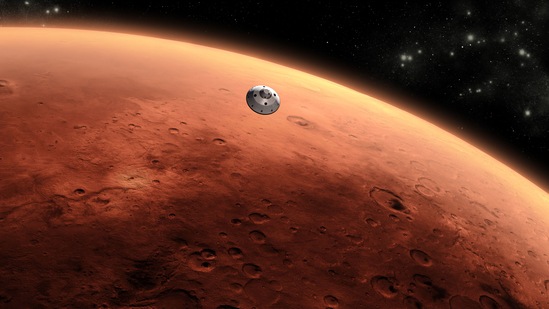Mars' core, measured on seismic waves, found to be 'surprisingly' large and thin
Among other things, the InSight probe has revealed that Mars has an unexpectedly large core, with a whopping 1,830km (give or take 40km) radius -- just over half of the planet’s radius.
Marsquakes, or seismic tremors on Mars, have revealed hitherto unknown aspects about the anatomy of the red planet. The findings, now published over three studies in the Science journal, were the result of a thorough analysis of the Martian surface carried out by Nasa's InSight probe which landed on the planet three years ago.

Among other things, the InSight probe has revealed that Mars has an unexpectedly large core, with a whopping 1,830km (give or take 40km) radius -- just over half of the planet’s radius. The probe also sent findings that suggest the possible average thickness of the Martian crust is between 24km to 72km, ruling out earlier estimates of up to 100km. Eight low-frequency marsquakes that produced both direct and reflected waves were identified in the third study and used to create and test different models of the Martian crust and mantle.
How were Marsquakes detected?
Nasa's InSight probe, which landed on Mars in 2018, is equipped with a solar-powered lander bristling with equipment, including a seismometer (a very sensitive vibration detector). Although Mars has no tectonic plates, the probe picked up the very first "Marsquakes" within months of its landing.
These may have resulted from vibrations caused by meteorites hitting the surface or from processes inside the planet, but over time the probe learned to pick up relatively small quakes, the best among the hundreds detected so far, despite the extremes of Martian weather and seasonally changing windy periods obscuring the data.
Since it is impossible to get a sample of a planet's core, seismic waves are used to estimate its size. It was the same for Earth, whose radius was first estimated by finding its “shadow” – an area where the core disrupts the arrival of seismic waves from distant earthquakes.
Why are the findings important?
The recent findings have dislodged years of projections and educated guesses regarding the interior of Mars. Until now, how much of the red planet each of the layers (an iron-rich core, followed by a silicate layer called the 'mantle', and then an outermost skin known as the 'crust') occupied was unknown.
But now, S-waves are reflected back to the surface of the planet by the interface between the core and the mantle, and signals from as many as six Marsquakes have enabled researchers to estimate the size and density of the Martian core.
"This means that the crust of Mars is very old, and it is rather thin," Reuters quoted seismologist Brigitte Knapmeyer-Endrun of the University of Cologne in Germany, who led one of the three studies on the Martian interior published in the journal Science.
The Martian mantle, sandwiched between the crust and core, extends roughly 970 miles (1,560 kilometres) below the surface. Its composition differs from Earth's, suggesting the two planets arose from different materials when they formed more than 4.5 billion years ago.
The new findings allow scientists to test theories of planet formation, Banerdt said.
"The understanding we will gain from this," Banerdt said, "will apply not only to Mars but to the formation and history of the Earth and any other rocky planet in our solar system or beyond."
(With inputs from agencies)



